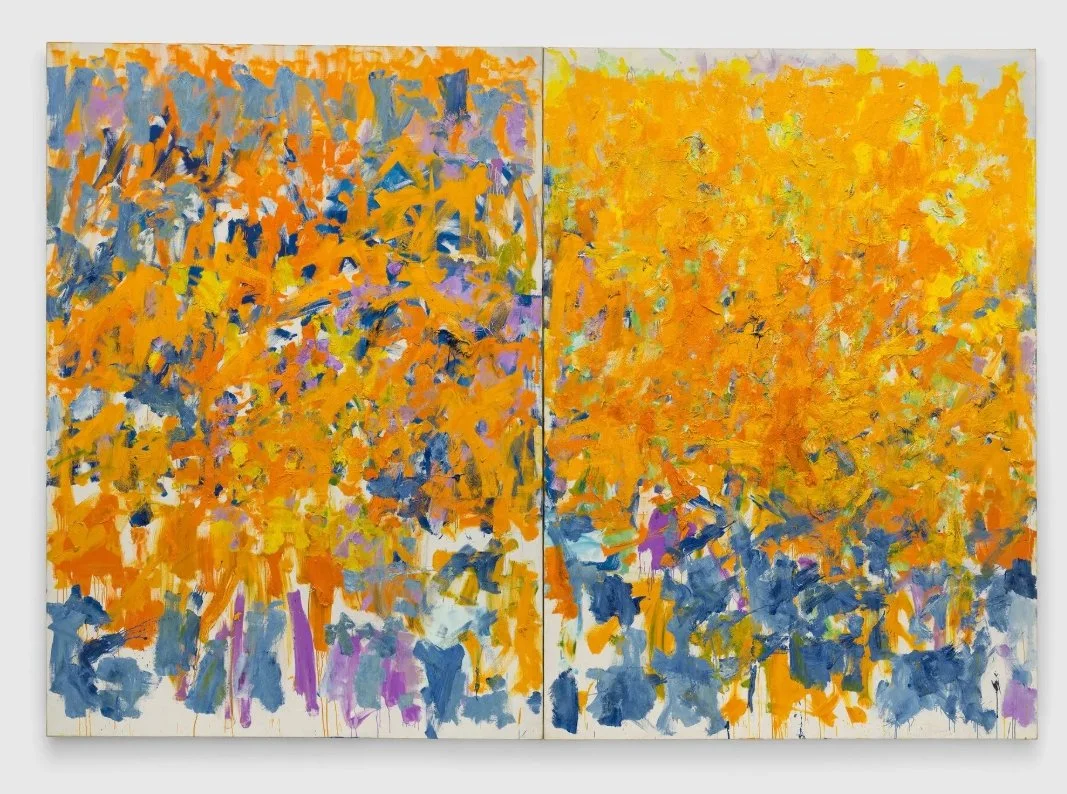The Groove 246 - The Past Isn’t Even Past: Why Art History Is Your Edge
Welcome to the 246th issue of The Groove.
I am Maria Brito, an art advisor, curator, and author based in New York City.
If you haven’t done so, please subscribe here, to get The Groove in your inbox for free every Tuesday.
THE PAST ISN’T EVEN THE PAST: WHT ART HISTORY IS YOUR EDGE
Joan Mitchell, Wood, Wind, No Tuba, 1979. Oil on canvas. Collection of the Museum of Modern Art, New York. There is a new wave of dozens of young artists painting colorful, loose abstraction canvases the way Mitchell did more than 50 years ago. Seeing the art historical references in new work is crucial to buying art correctly.
There’s a myth I hear all the time: you can collect (or make) great art without knowing what came before it.
At a young fair, a dealer proudly told me his artist “doesn’t look at the past at all, he is totally original.” Say what? Nothing in art comes out of thin air. If you pretend it does, you’re not being bold, you’re being amateur and naïve.
Art always talks to art. Sometimes it whispers (a palette choice, a structure). Sometimes it shouts (a direct argument with a master). Either way, the conversation is there. When you learn to hear it, you stop paying hype taxes and start buying with conviction. That’s not snobbery. That’s survival.
If you’re a collector, this fluency becomes your edge. If you’re an artist, it becomes your fuel. If you’re a dealer or advisor, it’s your credibility. The past isn’t a museum label; it’s the force that makes the present stronger.
How to Spot Lineage (Without Being Boring)
Each strong work is connected to something that came before it. The connection might be obvious (a grid that nods to Agnes Martin) or subtle (a still life holding silence that remembers Morandi). Originality isn’t a vacuum; it’s a reply. The best artists borrow from, argue against, and then push the idea somewhere new. Banishing history doesn’t make the work freer, but it does make it thinner.
Use a simple three-step check on anything you’re tempted to buy:
1) Influences: name two or three artists this work is talking to. If you can’t, ask the gallery. If they can’t, red flag.
2) Twist: what, exactly, is new here? Material, structure, subject, scale? Be specific.
3) Placement: where does this sit in the artist’s own arc: is it breakthrough, consolidation, or repeat? If you can’t answer those in plain English, pause.
This isn’t academic busywork. It’s how you separate “influenced by Basquiat” from Basquiat cosplay, “spiritual abstraction” from a Hilma-and-Agnes remix, “conceptual” from Duchamp with Wi-Fi. When you can see the thread, you stop paying a premium for the costume. You’re not just buying an object, you’re buying a statement in a long conversation.
Marketing Changed Buying. It Didn’t Change Meaning
Auctions, fairs, PDFs, and Instagram rewired how people enter the market. You can spot a work on your phone at 8 am and wire funds by lunch. That sped up transactions, but it also made them shallower. This new ecosystem created more “buyers” and fewer “collectors”. The speed of the market fueled by technology replaced the important conversations that people used to have with dealers and artists. Visits to galleries became optional.
Price became a shortcut for taste. Walk into a friend’s home, see a torn-label Warhol, and the first thought is often not “refined eye” but “healthy balance sheet.” At the top, a handful of super-collectors set the thermostat for everyone else. That’s exactly why art history matters: it puts meaning back where the price tag is trying to stand in for judgment.
While it is true that galleries lost parts of their old role, the core hasn’t changed: the market still rewards work that fits inside a lineage and moves it forward, long term. Knowing that lineage helps you dodge reheated ideas that only look “new” because they are well lit. Marketing can move units; it can’t manufacture depth. Substance still wins the long game.
Museums Are Gyms. Train the Eye
Go to museums the way athletes go to the gym. Reps matter. Stand in front of Gentileschi until the composition clicks. Sit with Goya until you feel the weight. Let Jack Whitten, Alma Thomas, Leonora Carrington recalibrate your eye.
Keep it simple. Pick three works per visit. For each one, jot down: what it does (color, structure, mood), who it’s talking to (two “influences”), and the one move that still feels alive today. Back at a gallery or fair, check if the “new” thing you’re seeing has roots or just good PR. The difference shows up fast.
Do this for a year and your taste will sharpen. Your hit rate will, too. You’ll buy the thread, not the trend. You’ll spot the work with a past and a future, not the one with a headline and a half-life. When the cycle resets (it always does), the pieces with roots are the ones still standing. That’s the point. Art history isn’t homework. It’s leverage.

